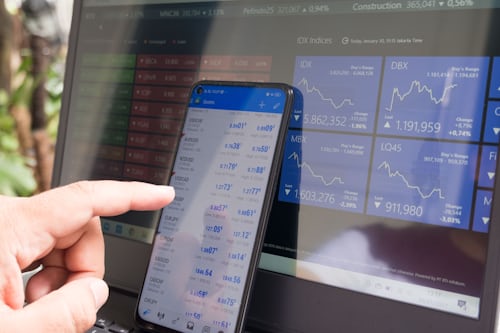Forex pairs volatility
When it comes to forex pairs volatility, this is often represented by how many pips a particular currency pair moves per day. Cross pairs tend to experience larger pip movements compared to major pairs (over the course of a day). This is due to relatively low liquidity.
The pip volatility of currency pairs is mainly due to liquidity, as a small number of buyers and sellers can have an encouraging effect on volatility. It is well known that exotic pairs like USD / MXN and EUR / HUF move hundreds and thousands of pips every day. Many forex traders swear by going for volatile currency pairs as they create many trading opportunities on a regular basis.
Forex Pips and Spreads
Since we've explained what a pip is in the sections above, it's probably a good idea to mention how the spread needs to be considered as well. In short, the spread is the difference between the bid price and the ask price of each currency in a pair. This is measured in pips, the star of today's page.
When you have completed a trade after you exness trading, you will see a loss (this is the spread). The reason is that you bought a currency pair at a higher price than the market price. The difference between the market price and your price is essentially the fee paid to the broker, which can be classified as a type of commission fee.
Below are some examples of a Forex spread - with a clear calculation so you can see how to evaluate it in terms of pips:
- Spread on EUR / USD (4 decimal places): suppose the bid price is 1.4100 and the ask price is 1.4104. The spread here is 1.4104 - 1.4100 = 0.0004 or 4 pips.
- Spread on USD / JPY (2 decimal places): In this example, let's assume the bid price is 114.11 and the ask price is 114.17. The spread here is 114.17 - 114.11 = 0.06 or 6 pips.
- Spread on GBP / USD (5 decimal places): this time the bid price is 1.41004 and the ask price is 1.41023 The spread here is 1.41023 - 1.41004 = 0.0019 or 1.9 pips. Alternatively 19 fractional pips.
- Spread on USD / JPY (3 decimal places): In this example, the bid price is 86.770 and the ask price is 86.782. The spread here is 86.782 - 86.770 = 0.012 or 1.2 pips. Alternatively, 12 fractional pips.
Now let's imagine the lot is 100,000 and you want to calculate the cost of a spread. Using the first example, you would calculate 4 (pips) x 100,000 x 5 = 200 US dollars. Calculating the spread if forex trading will be a big part of your long term strategy. Therefore, your knowledge of pips and spreads is most useful here.
Types of Spreads
There are a few different types of spreads that are commonly used by Forex traders:
- Fixed: the bid-ask spread remains constant regardless of market conditions.
- Variable: this type of spread is sometimes referred to as "floating". This means that the price of the currency changes with the market fluctuations. At a time when the market is inactive, the spread is low. On the other hand, when the market is active, the spread will be high.
- Fixed with an extension: One part is predetermined and the trader decides the other side. Suppose the trader decides the selling price of a certain currency based on the buying price. If the purchase price is high, the trader could sell that currency but add an additional 5%.
Note that a high purchase price can lead to losses at the beginning of your trade. However, these losses are usually recouped over time. The market situation can be changed by all sorts of things like political unrest or a financial crisis. Therefore, it is a good idea to follow the financial news when trading forex. By understanding the spread, you can eventually identify which brokers offer the lowest spreads in the region forex market.



